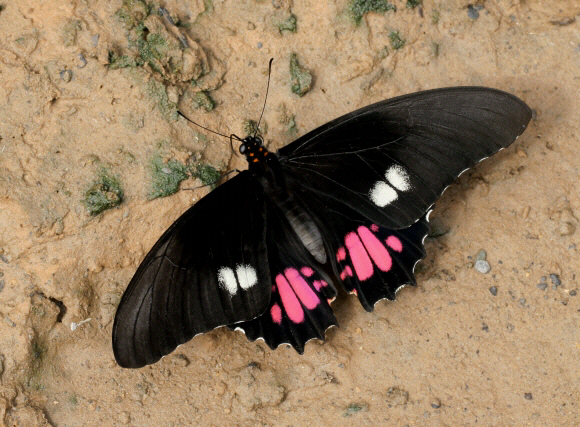
Introduction
The Papilionidae is comprised of about 600 known species. They are found throughout the world in almost every environment including deserts, mountains, grasslands, tropical rainforests, temperate woodlands, meadows, marshes and coastal dunes.
There are 3 subfamilies. The Parnassiinae consists of about 50 species. They are known as Apollos and breed mainly in mountainous areas of the northern hemisphere. The Papilioninae comprises of about 550 species distributed across the world, and includes the Swallowtails and Dragontails, and the giant Birdwings of south-east Asia. The other subfamily Baroniinae consists of a single species Baronia brevicornis which is endemic to the mountains of western Mexico.
Heraclides comprises of 28 species, and is the neotropical “sister” genus of the Holarctic Papilio, to which the European Swallowtail Papilio machaon, and the North American Black Swallowtail Papilio polyxenes belong. Some of the Heraclides species are marked with cream spots and bands, and have obvious affinities with their Holarctic counterparts. Others including anchisiades and the female of torquatus are Parides mimics, with bright pink patches on their hindwings.
Heraclides anchisiades is found from Texas to Paraguay.
Habitats
This species is found in many different habitats including tropical rainforest, cloudforest, humid deciduous forest, orchards and suburban zones at altitudes between sea level and about 1400m.
Lifecycle
The eggs are yellow and laid in clusters of up to 40 on the leaves of the foodplants which include Casimiroa, Zanthoxylum and Citrus ( Rutaceae ).
The caterpillars of all Papilionidae bear tubercules when in their first instar. In some genera such as Heraclides and Eurytides these are absent in the mature larva, but in others such as Troides, Battus and Parides they develop into soft fleshy knobs or hooks. Many are very colourful, with bright green bodies adorned with orange or red tubercules, while others such as Heraclides are dull in colour and similar in appearance to a bird dropping.
All Papilionidae caterpillars are equipped with an extrusible forked appendage called an osmaterium which is situated behind the head. This organ is everted if the caterpillar is molested, and gives off a noxious pheromone containing isobutyric acid, which is used as a defence against ants.
The pupa is dull brown and resembles a twig. It is attached by the cremaster and a silken girdle, in an upright position, to a stem.
Adult behaviour
The butterflies are only active in bright sunshine. Both sexes will visit Lantana and the flowers of many trees and shrubs, but males are much more commonly seen on river beaches and dry river beds, imbibing mineralised moisture. They are usually seen singly, but sometimes several gather together, usually amidst aggregations of Nymphalids and Pierids.
When feeding either at flowers or on the ground, the wings are kept constantly fluttering – a feature common to Swallowtails throughout the world. After several minutes, if undisturbed, they eventually relax and fully outspread their wings.
